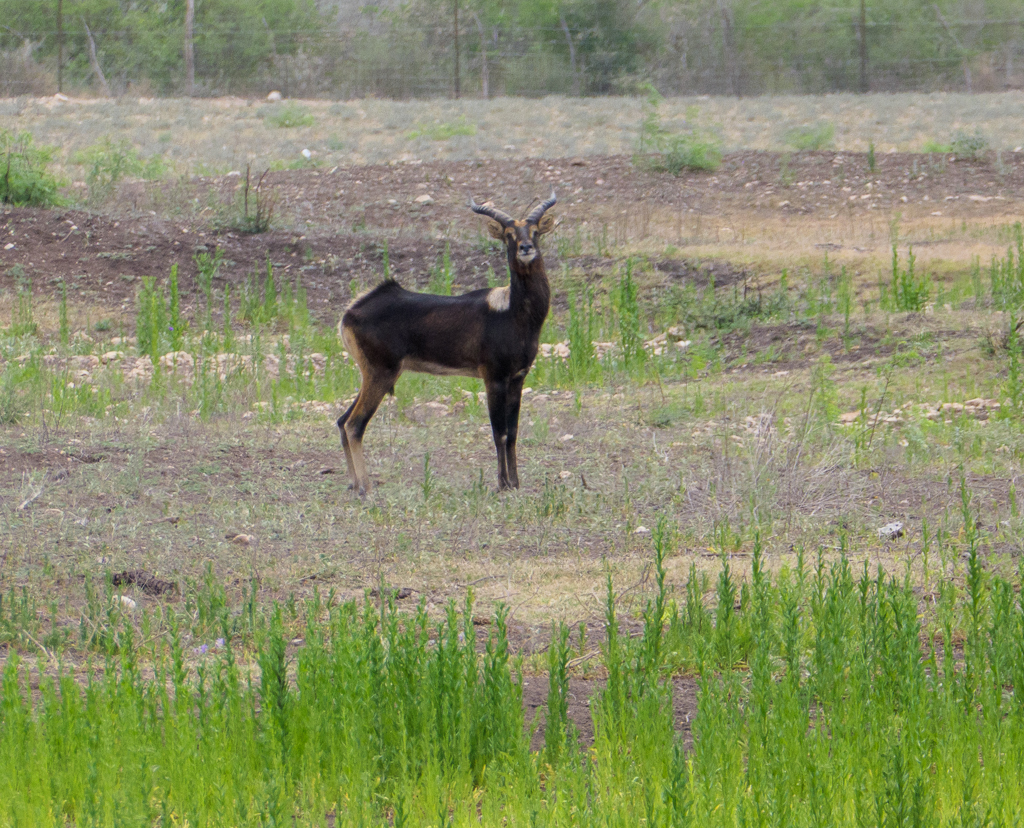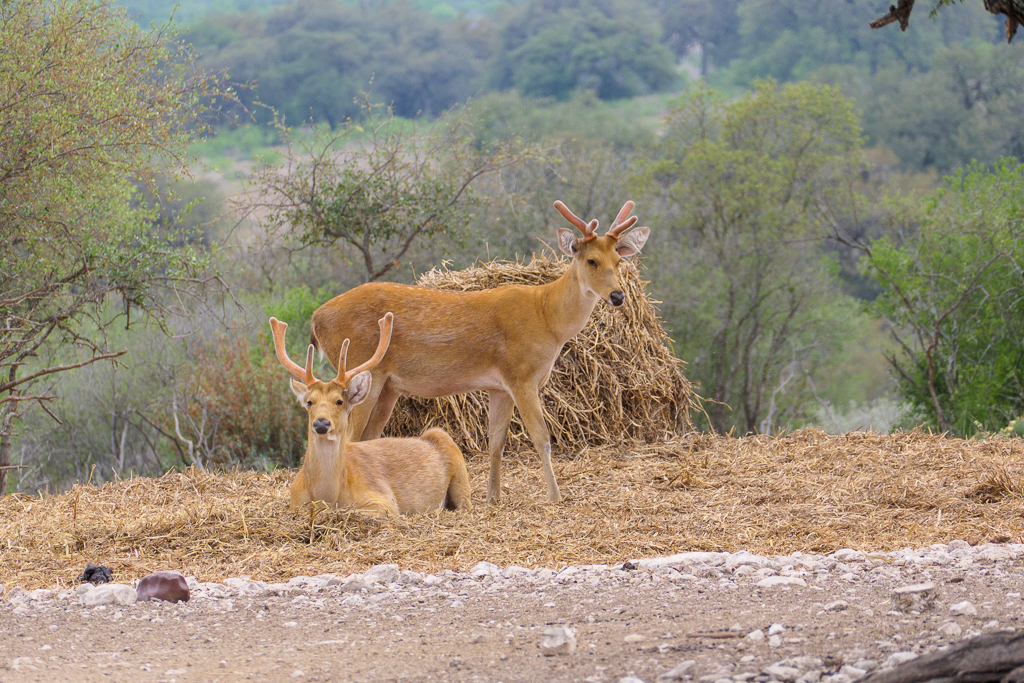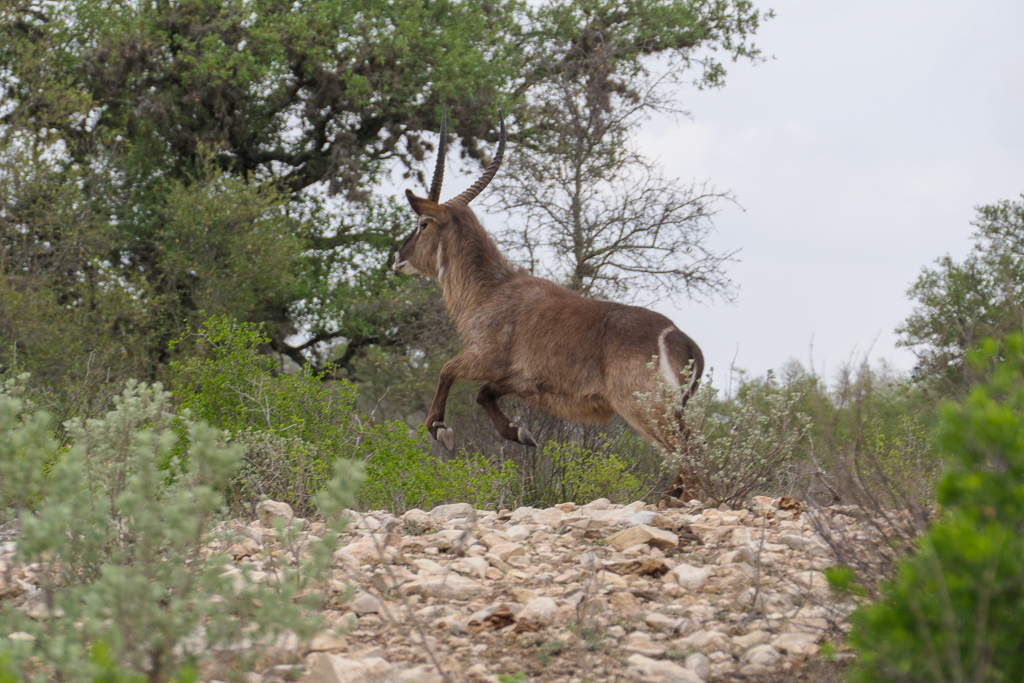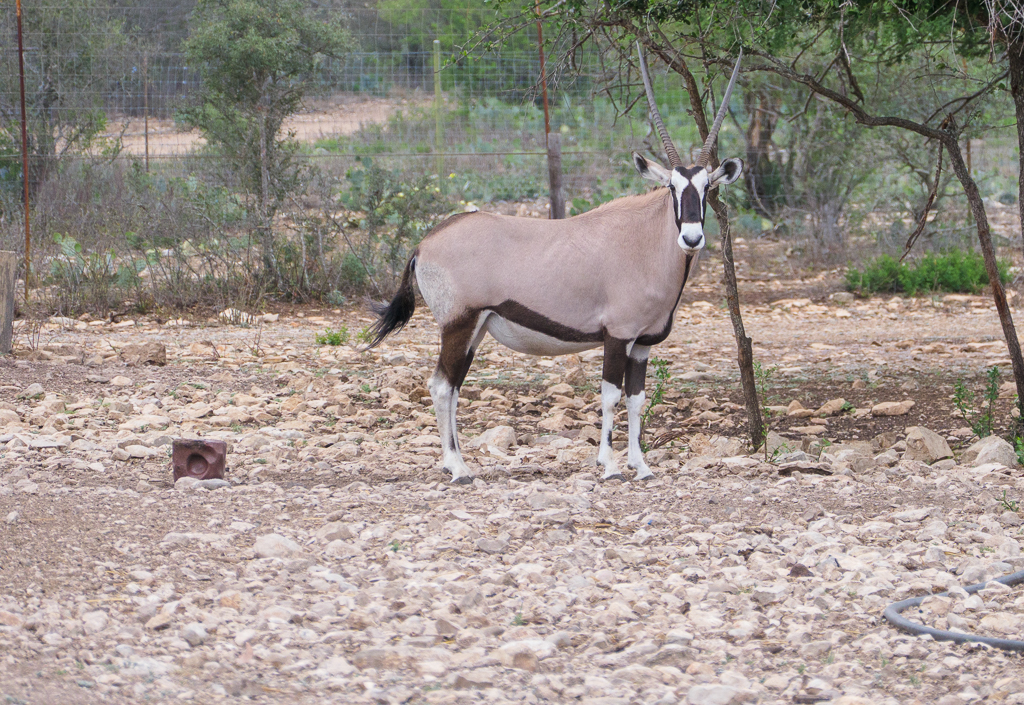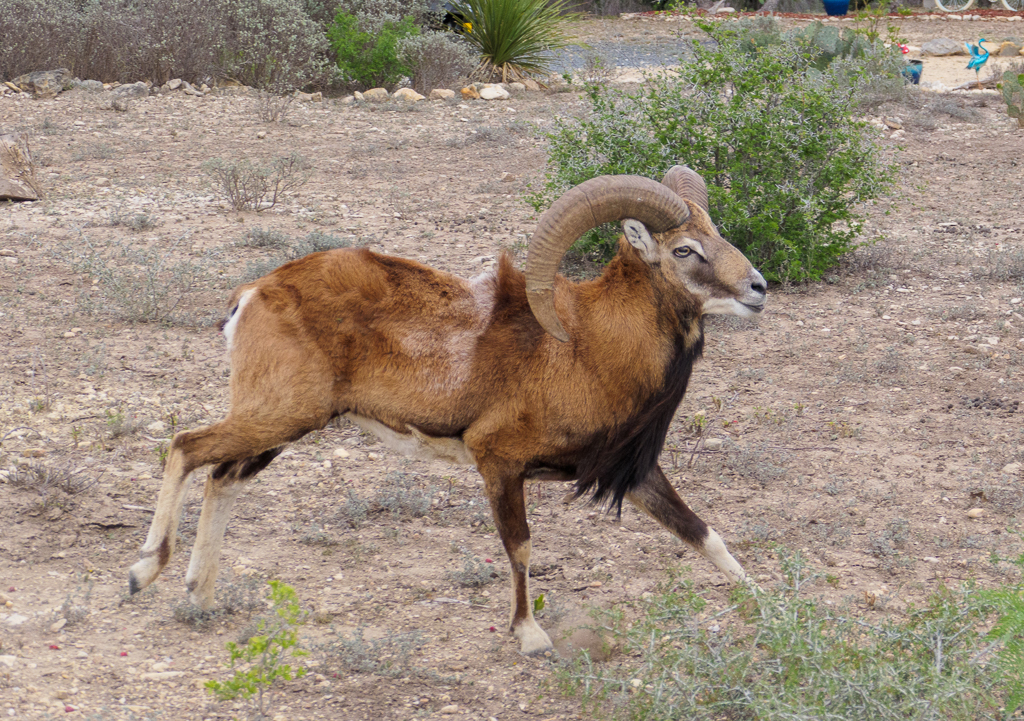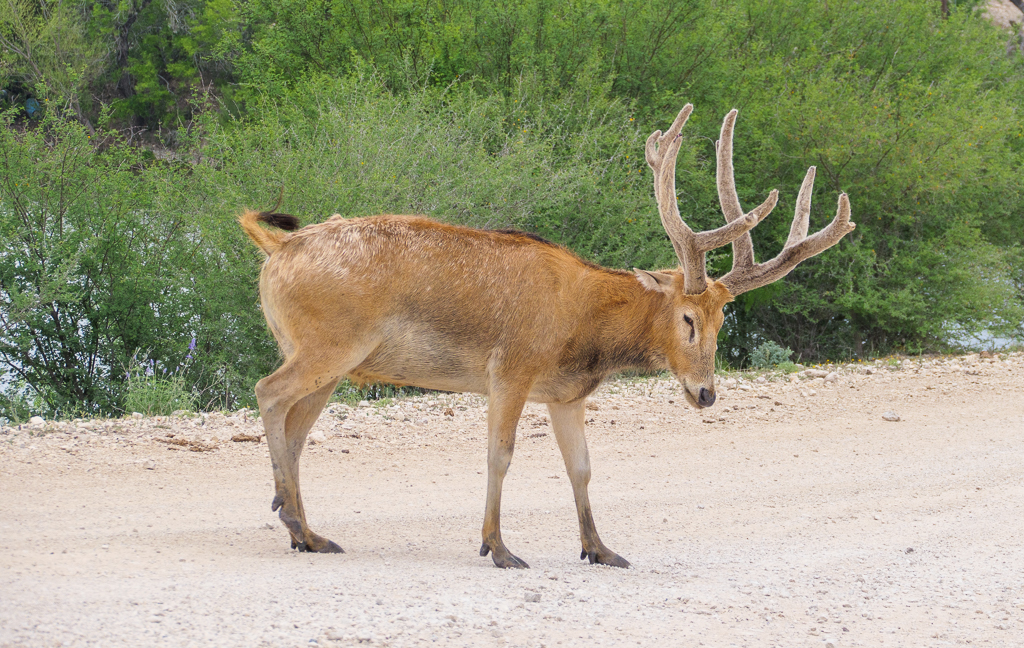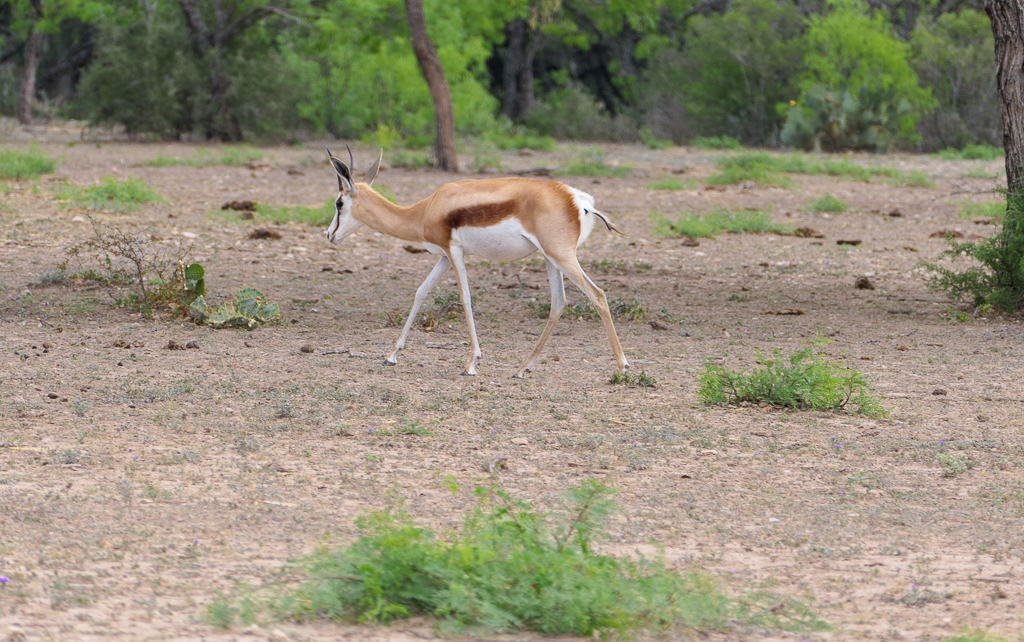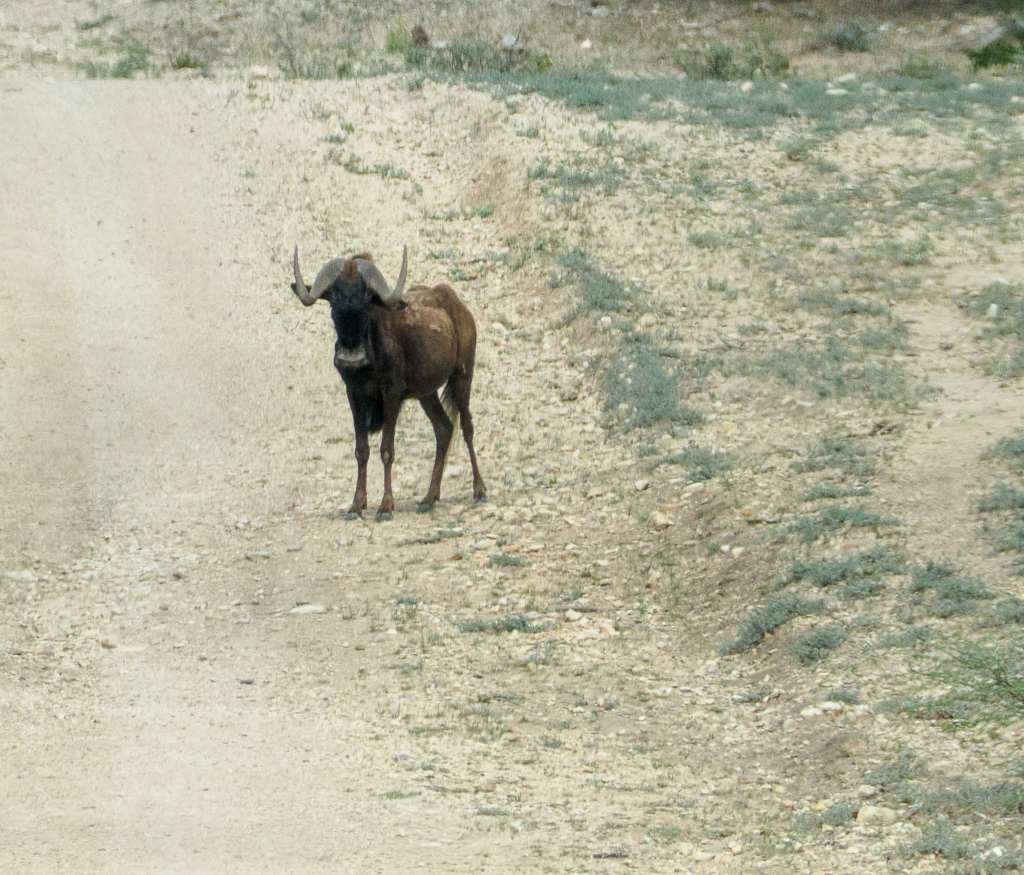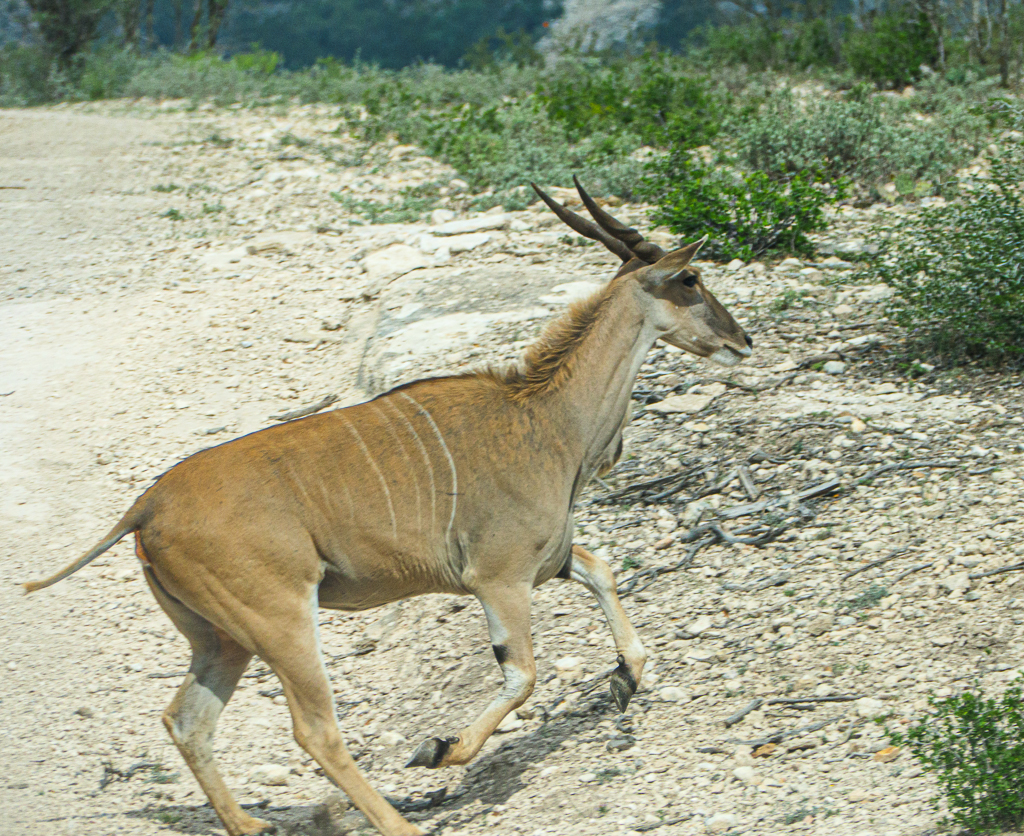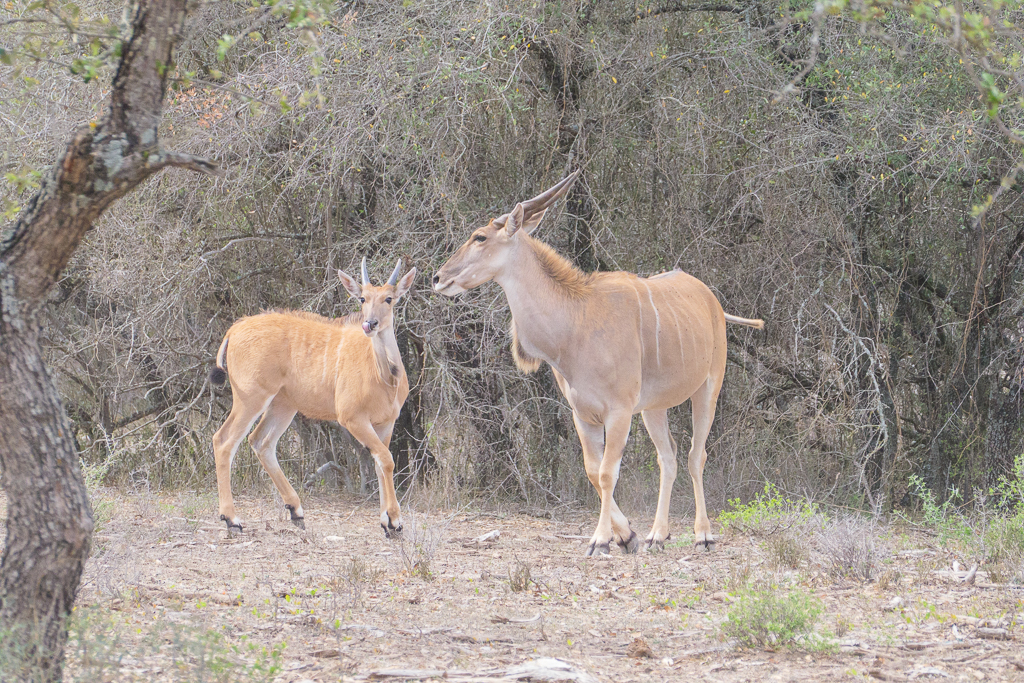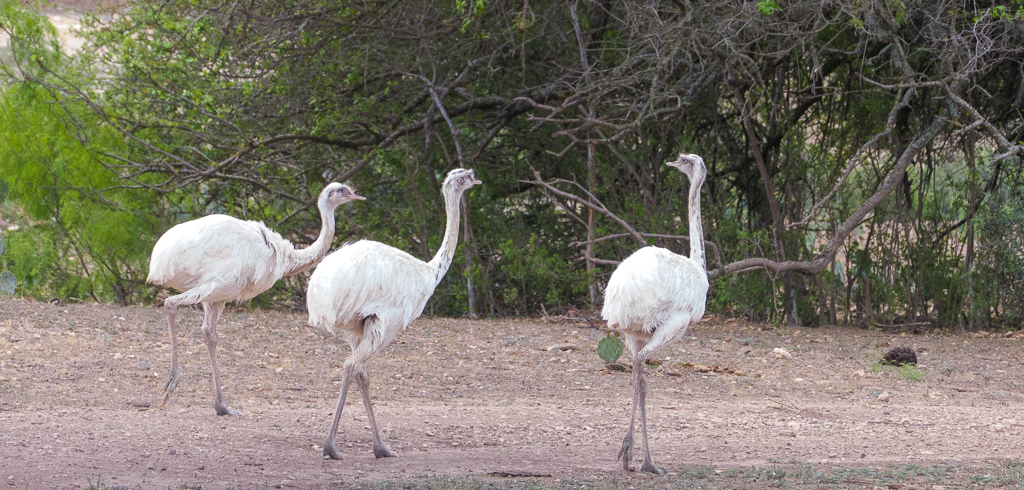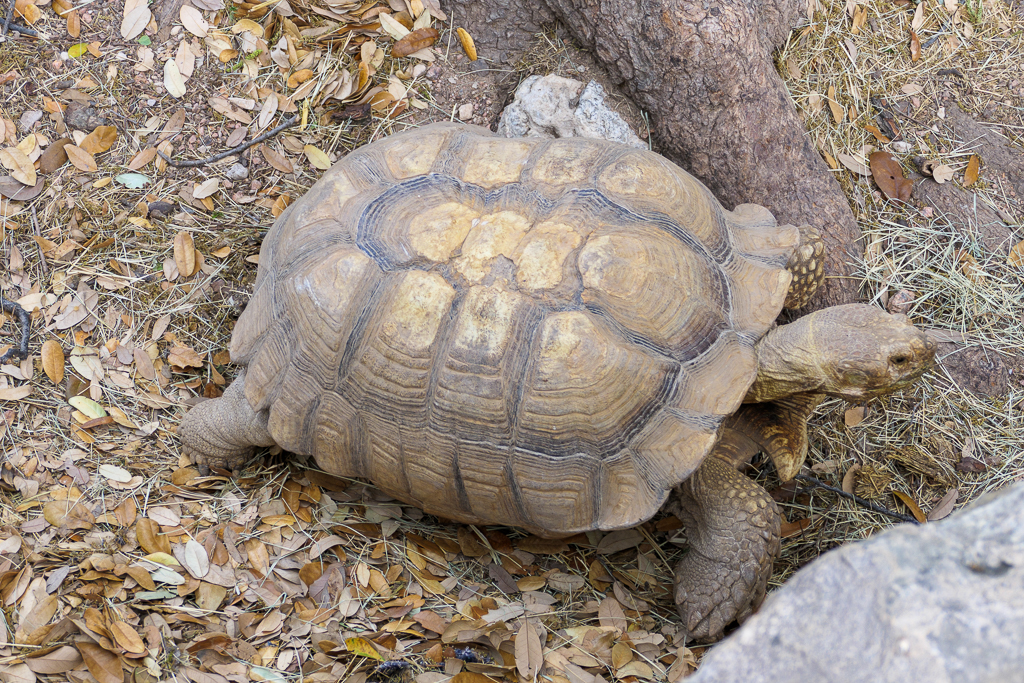Ox Ranch is not a place I’d ever have visited if it weren’t for the eclipse.
We were not the usual kind of group that comes to the ranch. Most of their visitors come armed and ready to hunt – not just for the deer and game animals that are all over the area, nor the wild boar which are real pests, but a large variety of exotic animals which the ranch imports as trophies (and which we’d enjoyed photographing).
But it didn’t matter, at least for the couple of days we were there. I had a great time there. The scenery was beautiful, the animals gorgeous, and everyone treated us well. The guides were great at showing us the animals, and the food was delicious and the cabins were comfortable. It was fun to see the equipment at DriveTanks, too.
I don’t think I’ll be back, but I’m glad I went. It was a learning experience of the best kind.
We left the ranch about 9am after one last impressive breakfast and boarded two buses. One bus took the people who were continuing on the post-tour to see the Texas Hill Country (including a visit to the Lady Bird Johnson Wildflower Center). We would have been among them if we weren’t planning to leave for Japan in a week, but as it was, we had to get on the bus going directly to the San Antonio Airport.

Well, almost directly; we stopped at one last Wal-Mart to use the facilities and say goodbye once more; Rick Binzel performed his role as greeter one last time, but this time he was joined by the store’s real greeter, who was amused by his antics.
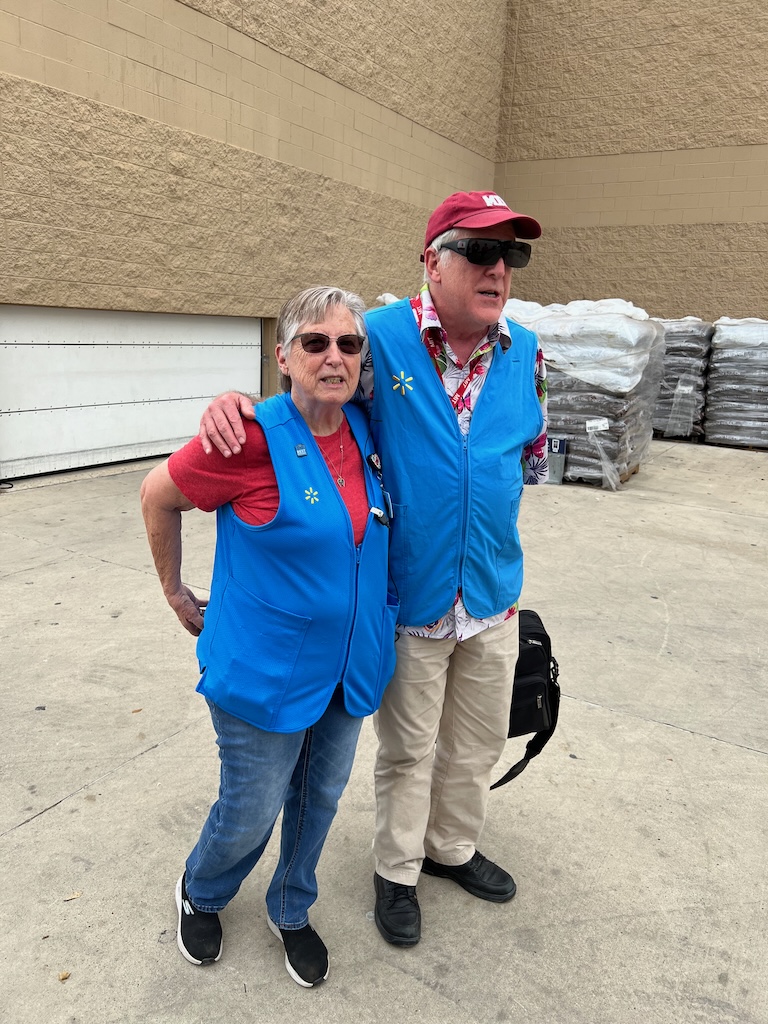
Our time at the airport was not memorable, and neither was the flight – a perfect trip home!
